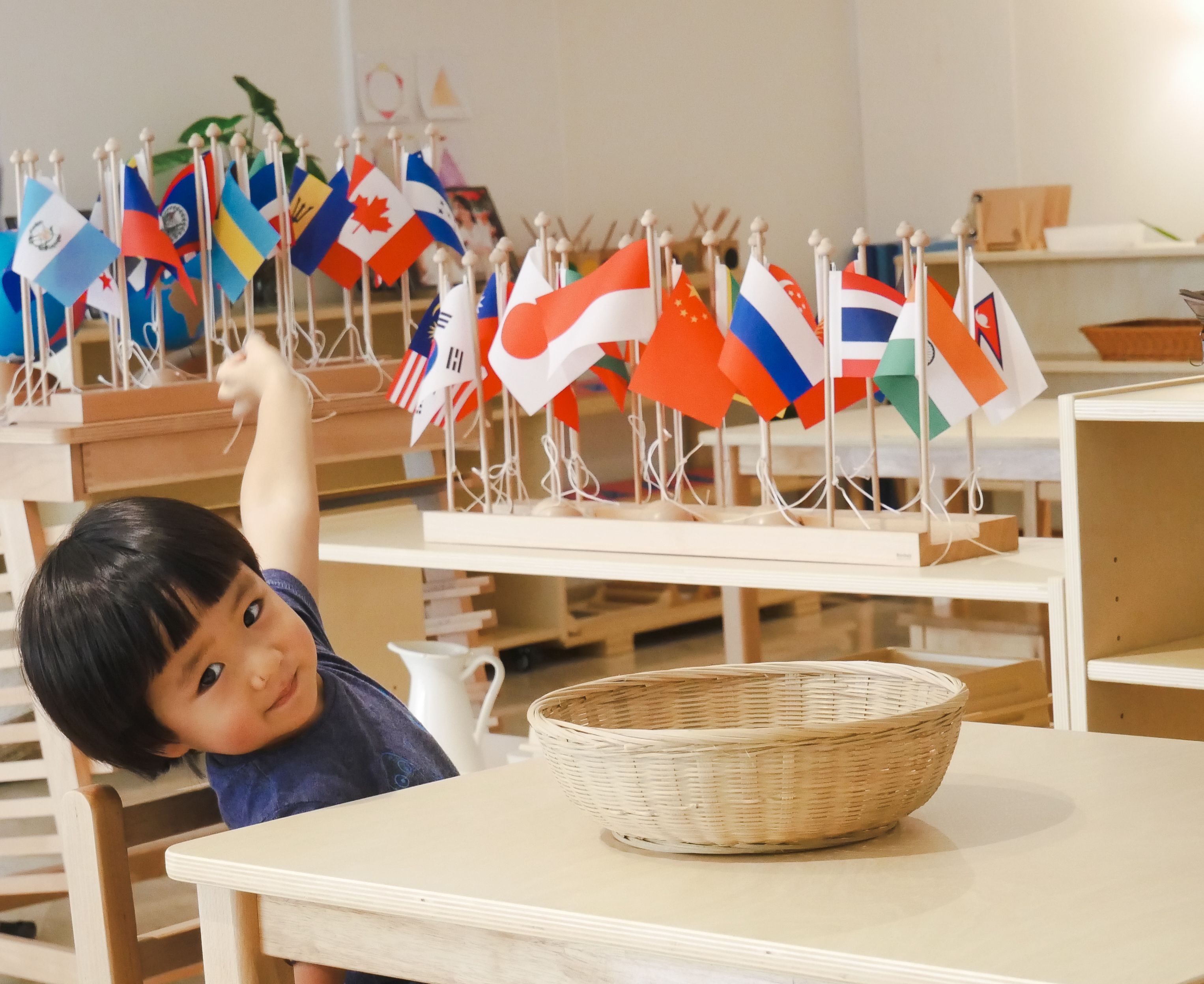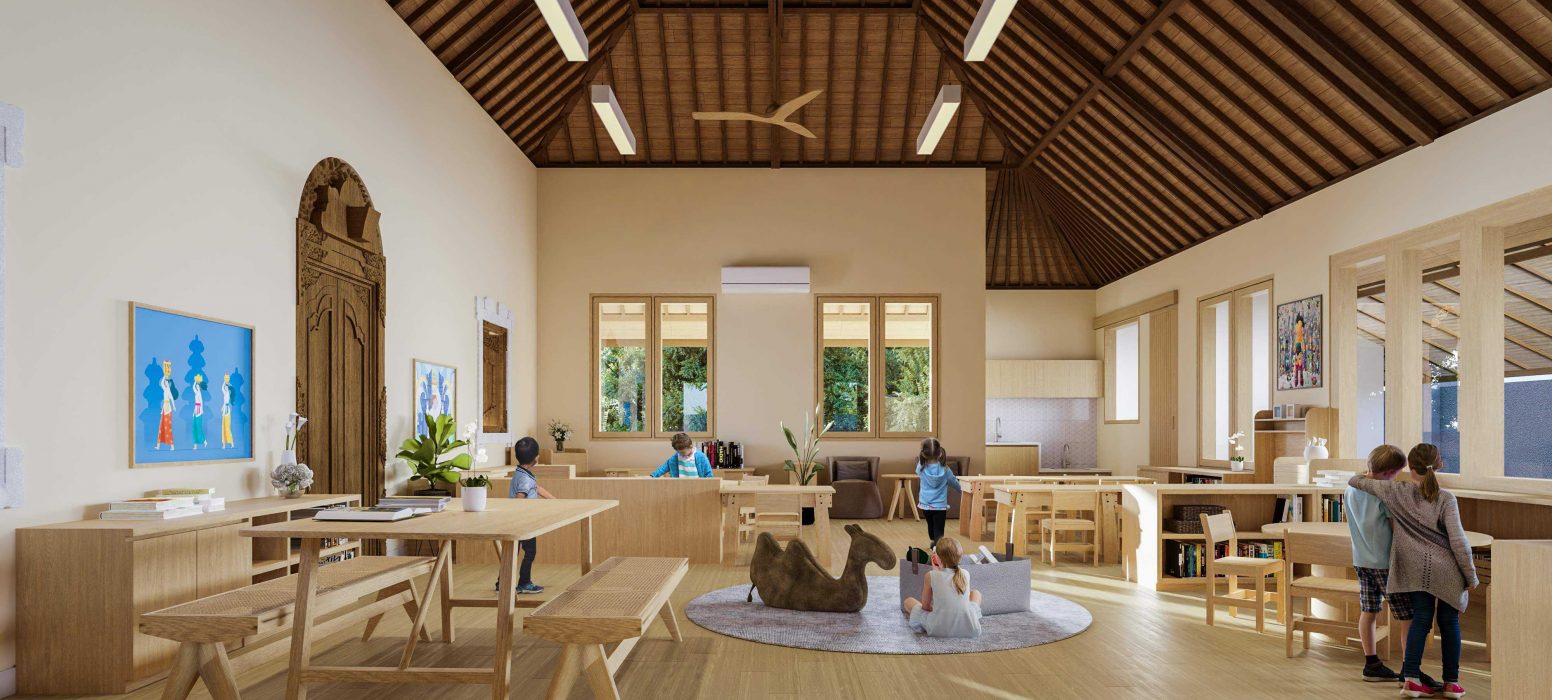
Guidepost Montessori
With over 130 campuses around the world, Guidepost is the largest global network of Montessori schools, providing opportunities to learn in other countries where there is a Guidepost school.
Guidepost Montessori AYANA Bali is the first of its kind in the Guidepost family, a unique learning experience that combines the tried and tested Montessori approach with the geographical beauty of Bali.


What is the Montessori Approach?
Montessori education supports children's growing independence at every age. This approach helps your child develop a fundamental, enduring love of learning and attain the deeply ingrained academic, social, and emotional skills they need to succeed as an adult.
In Montessori, “follow the child” often fuels the misconception that children are given free rein in their environments – which can further lead families to assume that Montessori classrooms are entirely permissive and do not instill discipline. However, "child-led" in a Montessori context does not mean the absence of structure, nor does it preclude discipline. Maria Montessori's concept of "freedom within limits" put equal emphasis on both. Limits help to create a healthy balance. In our classrooms, children are free to choose between different works and activities, but it is our role as the adult to set limits – and we set these limits during neutral times. Limits frame expectations and help children be more successful in the work that they choose. We must give them space, freedom of movement and respect that they will progress at their own pace, trusting their own process while remaining present to guide them. They crave the structure that limits give them!
"To let the child do as he likes when he has not developed any powers of control is to betray the idea of freedom." - Maria Montessori
Montessori believed that to cultivate concentration — to truly allow children to explore their interests — we must protect their ability to engage in deep and meaningful work for an extended period of time. For many of us, this idea comes as a great relief. How many times were we finally fully immersed in the throws of a math problem when the bell rang and it was time to put away our work and turn to geography or history? Imagine this in your own life as an adult: what if we could spend a certain period of each day completely uninterrupted and focused on the task at hand? Not having to interrupt work with a meeting. What types of productivity could you achieve? Montessori affords all of this, helping to inspire students to be flexible, create independence, and develop a sense of order. The uninterrupted work cycle in a Montessori program promotes focus and allows the child to build her capacity not just to make choices but to learn the joy of persisting in them.
“Once you interfere, a child’s interest finishes, and the enchantment is broken. It is as though he says, ‘I was with myself inside. But you called me, and so it is finished.’ ” - Maria Montessori
Montessori education recognizes that each child is a unique individual with their own pace of development, interests, and learning style. The curriculum is tailored to fit the needs and abilities of each student, rather than forcing all children to adapt to a uniform teaching pace. The educator acts as a guide, observing and introducing new lessons and materials based on a child's readiness and interest. This personalized attention ensures that children are neither bored by tasks that are too easy nor overwhelmed by those that are too difficult. It fosters a deep love of learning, encourages self-discipline, and develops the ability to work independently as well as collaboratively. This method respects the natural development of children, supporting their progress in becoming confident, competent learners who are prepared to take on challenges and explore their passions.
“The greatest sign of success for a teacher...is to be able to say, 'The children are now working as if I did not exist.'” - Maria Montessori
Maria Montessori understood that children learn best through hands-on activities that allow them to explore and manipulate their environment. This philosophy encourages the use of concrete materials that are specifically designed to illustrate abstract principles in a way that is accessible to young learners. For instance, instead of merely memorizing mathematical formulas, students use beads and blocks to perform mathematical operations, thereby gaining a deep, intuitive understanding of numbers and their relationships. This method extends beyond mathematics to language, science, and cultural studies, where sensory-based materials play a crucial role in making complex ideas understandable and relatable.
The tangible experiences provided in a Montessori classroom are not just educational tools; they are bridges connecting the child's natural curiosity with the world's complexities. By touching, moving, and experimenting with materials, children develop fine motor skills, coordination, and, importantly, the cognitive abilities to analyze, reason, and problem-solve. These experiences are carefully structured to progress in complexity, allowing children to build upon their knowledge and skills at their own pace.
"The hands are the instruments of man’s intelligence." - Maria Montessori
In Montessori schools, multi-age groupings give opportunities for younger children to learn from older ones and experience new challenges through observation. Older children deepen their own understanding by teaching concepts they have already mastered, while developing leadership abilities as role models in the classroom. Since each child's work is individual, Montessori students have more time to explore academic concepts at their own interest and readiness. So, rather than a classroom of four-year-olds all being directed to practice phonics at once, a comparable Montessori classroom would have four-year-olds working on any number of language activities at their choosing and experience level. If a three-year old was ready for more advanced language work, she wouldn’t be held back by a classroom agenda. On the contrary, if a five-year old was struggling with language work, she would have access to more one-on-one support. At the same time, there is cooperation rather than competition between the ages because differences in abilities are normalized. This arrangement of course mirrors the real world, where adults work and socialize with people of all ages and abilities.

